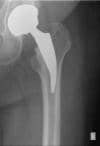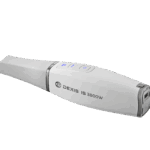Cathy Sundvall, Consultant
Kissimmee, Fla

Sundvall
For many orthodontic patients, the most important day of treatment is debonding day. But once the brackets are off, there’s still work to be done. Here’s a quick guide to clinical and promotional protocols.
Remove Band Cement
A sharp scaler is the most common hand instrument used to remove cement. Be sure to maintain a fulcrum and work away from the gingiva when possible. A band-removing or adhesive-removing pliers can be used to remove bulk adhesive, but be careful not to scratch the enamel. A Cavitron or ultrasonic scaler maximizes scaling effectiveness and patient comfort.
Remove Bonding Adhesive/Resin
A scaler can be used to scrape and pick the adhesive. The lower beak of many band-removing pliers can also safely and easily remove adhesive. Fluted diamond burs are designed for controlled removal of bulk bonding adhesive after the brackets have been removed. The nontapered friction grip burs cut quickly and do not provoke fissures. Burs are designed to reach into those tight areas along the gingiva and occlusal pits and fissures.
Polish and Clean
Polishing the teeth using a polishing paste or pumice and a rubber prophy cup is standard after removing braces. Maintain a fulcrum while pumicing, and use a light touch to be sure not to overheat the tooth. While the polishing paste is on the teeth, take a piece of floss and check all contacts for residual cement or plaque. Rinse thoroughly with your air/water syringe. Patient comfort should be your first concern, along with the quality of the polishing procedure. Check with a mirror and scaler to confirm all cement and plaque have been removed.

Some recommendations for polishing the teeth include Prisma-gloss polishing paste and Ultra Fine polishing paste (from DENTSPLY Caulk), and Enhance composite finishing discs (also DENTSPLY Caulk) in a low-speed handpiece. Renew System points (from Reliance Orthodontics) remove small residual amounts of adhesive from the tooth surface and will polish the enamel without damage. The points’ tapered shape facilitates removal of adhesive close to the gingiva. Soft-Lex finishing disks (from 3M Unitek) also work well followed by a final polish with a rubber cup and Zircate paste.
If a patient has decalcification or tooth sensitivity, I recommend two 3M ESPE products: Clinpro 5000 toothpaste for enhancing remineralization and Vanish White Varnish, a 5% fluoridated clear varnish, for treatment of hypersensitive teeth.
Celebration and “Show and Tell”
Once the patient’s teeth are spotless, take the time to congratulate him or her. You could show the patient “before” photographs or models as a visual reminder of where they started; make an announcement over the office’s intercom system letting everyone know of this special day; have a revolving “blue light” attached to the patient’s chair that signals braces being removed; or sing a song, read a poem, or do a cheer.
Patients or parents also appreciate gifts to show that this day is a true celebration. Good examples include: a bottle of “sparkling cider” with a specialized label from the practice; flowers and balloons; candy- and popcorn-filled gift bags; gift certificates; or T-shirts with big, white, straight teeth.
Labels and thank-you notes on the debanding gifts could have the following message: “Congratulations! I know that you are proud of the way your teeth look and feel. You should be, because your help and cooperation played a very important role in the outcome and progress of your treatment.
“We all worked hard to achieve your beautiful smile. You now have a smile that will last for a lifetime. If you have a friend or neighbor that would love a smile like yours, be sure to let them know we are taking new patients.”










